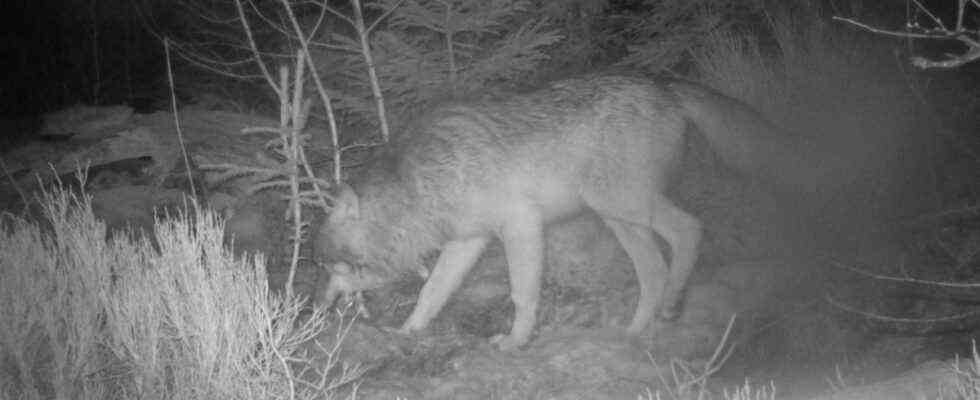Experts thought it likely from the start. Now it is official. In southeastern Upper Bavaria, in the Traunstein region, a wolf roams around and has repeatedly killed sheep and other farm animals. This has now been confirmed by genetic tests on behalf of the State Office for the Environment (LfU). However, it remains unclear whether all incidents involve one and the same wolf or whether there were several. The so-called customization is still pending. Your results are expected in early January.
Individualization is of great importance for the future of the wolf. The district administrator of the Traunstein district, Siegfried Walch (CSU), applied for the predator to be shot down in mid-November. He justifies it with the increased cracks of farm animals in the region and the danger for people, which from his point of view emanates from the wolf. The predator has repeatedly stayed close to towns and farms. The government of Upper Bavaria is responsible for the decision, the decision is pending.
Both cracks and sightings have continued to accumulate since Walch’s application. Six incidents were documented in mid-December alone. The wolf was also filmed from a car while walking through the village of Bergen at night. After the incidents, District Administrator Walch renewed his shooting demand. Agriculture Minister Michaela Kaniber (CSU) and Environment Minister Thorsten Glauber (FW) agreed with him – if all legal requirements are met.
The animals are usually very shy
The hurdles for removing a wolf from the wild – as the shooting is called in official German – are high. The wolf is very strictly protected. The animals, which are usually very shy, may only be shot if they pose a danger to people, cause high damage to farm animals or attack farm animals that cannot be protected, for example on steep alpine pastures. This is how it is prescribed by European and German nature conservation law. This is what it says in the Bavarian “Wolf Action Plan”.
According to experts, a number of incidents must be documented to justify shooting a wolf. One-time sightings or individual cracks of farm animals are not sufficient grounds – especially if the pastures are not adequately protected. According to SZ information, the committee of experts that advises the district government on the decision on the application for shooting has recommended that further information be obtained about the wolf. Above all, this includes evidence of how many incidents can actually be attributed to the predator.
In Germany, seven wolves have been shot since 2016 because they represented a danger to humans or caused excessive damage – all in northern or eastern German federal states. There are currently 157 wolf packs, 27 wolf pairs and 19 sedentary solitary wolves across Germany. In Bavaria there are four packs, one pair and five individual animals. The shooting of the Traunstein wolf, if approved and carried out, would be the first since the extinction of predators in Bavaria.

